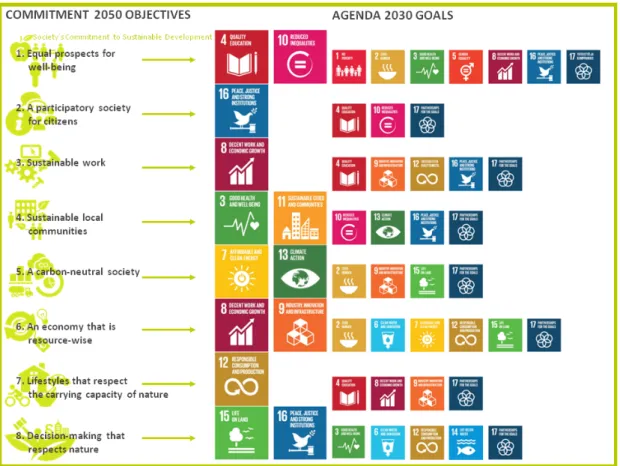For the most part, the responses to the research questions were positive, and the results leaned toward acceptance of the benefits of gamification. Often referred to as "the use of game design elements in non-game contexts" (Deterding et al., 2011, p. 9), gamification is not just implementing game elements in contexts other than games.
Gamification
Definitions of gamification
He argues that he himself has defined gamification in the same way as Deterding et al. 2011), that the definition of gamification needs to be reformed if gamification is to evolve as a field. Therefore, the closest definition to gamification discussed in this thesis is that of Deterding et al.: “the use of game design elements in non-game contexts” (Deterding et al., 2011, p. 9).
The potential and disadvantages of gamification
Consistently, Koivisto and Hamari (2014) found that the usefulness of gamification tends to decrease during continued use of the gamification service, leading to a credible novelty effect of gamification. Contrary to these views, Hanus and Fox (2014) found that gamification can reduce the motivation of the users well enough – in their case, reducing the exam scores of students from gamified class, as opposed to those who learn through non-gamified methods.
Gamification, motivation and behaviour change
Some of the earliest definitions of social marketing are those defined by Kotler and Zaltman in 1971 as "--the design, implementation, and control of programs intended to influence the acceptance of social ideas and involve considerations of product planning, pricing, communication, distribution, and marketing research" (Kotler &. This aspect of behavior change was brought to light by the social behavior when Andreasen stated that the target audience for the social behavior was brought to the light by Andreas one).
Gamification and sustainability
Greenhouse gases and carbon footprint
The origin of the carbon footprint is in more developed countries, where public interest in environmental issues has increased, building a sense of responsibility for action against global warming (Goodall, 2007). The activism of the general public led to a situation where there was a need for a tool to measure environmental impact, leading to the concept of carbon footprint (Pandey, Agrawal and Pandey. 2011).
Sustainability and sustainable development
An example of a direct carbon footprint would be the emissions caused by driving a gasoline-powered passenger vehicle. It's worth noting that this only takes into account the use of the car - not the carbon footprint of making the car itself and the resources used to make it.
Economic, social and environmental sustainability
The three-pillar or three-dimensional model was also criticized, for example because it does not include the cultural dimension, which would also be important to preserve for the future generation. It is also important to note that ubiquitous equality is almost impossible to achieve, which upsets the balance between the three dimensions of sustainability.
The service, Society’s Commitment’s objectives and Agenda2030
The SCOs include the UN's Sustainable Development Goals (SDG) presented in the Agenda2030, as presented in Figure 1.
Lifestyle test
After answering all the questions, the system provides a comparison between the user's carbon footprint and the average carbon footprint of those who took the test (see Figure 2), including the sectional breakdown of the carbon footprint. After completing the Lifestyle test, suggestions for different ways to reduce the carbon footprint are presented to the user. The system then provides calculations of how much the chosen action reduces the user's carbon footprint.
After selecting the lifestyle changes the user is trying to achieve, the system provides an estimate of how much the choices made will reduce the carbon footprint of the user (see Figure 3).

Expert interviews as a data gathering method
The interviewer's presence affects both the interviewee and his answer (Hyvärinen et al., 2017), therefore it is important for the interviewer to be present throughout the session, as part of the discussion. Since the facts that emerge as part of the interview are the result of the combined efforts of the interviewee and the interviewer (Ruusuvuori et al., 2010), one cannot disregard the effect the interviewee's involvement has on the data that is the result of the interview. Since all the data collected is filtered through the interviewer, the resulting data and analysis will ultimately be biased.
In order to avoid and neutralize possible research biases, the interviews and the views on the interview subjects tried to be kept as objective as possible, focusing neither on the potential nor on the drawbacks of gamification, but keeping the focus on the positive and negative views.
Research material – the interviews
In three of the four interviews, the sections where the interviewer introduced Sitoumus2050's gamified concept (more information on this in the following subsections) were left out of the transcription process, as it was primarily a monologue and a presentation of the concept. One of the interviewees (P2) gave input to the concept during the presentation, and therefore this section was also transcribed. One interview (P3) had some technical problems which made it impossible to finish the interview in the allotted time.
In the interviews, the emphasis was on the interviewees' personal opinions about the phenomena – therefore it was important to let the interviewee somewhat dictate the flow of the discourse (Ruusuvuori et al., 2010).
Thematic analysis
As Eskola and Suoranta write, the structure of the interview is often sufficient for the thematic structure of the analysis (1998). It was found that the themes that emerged from the data supported the research problem and partially answered the research questions presented at the beginning of the thesis, so the analysis was classified into themes according to the structure of the interview. Furthermore, these topics are remarkably similar to the questions asked in the interviews; this is evident as the interview topics focused on the interviewees' questions.
Often the analysis is closely connected to the theory of the discussed phenomena, therefore the narrative in the results section refers to the literature on both gamification and sustainability.
Gamified concept of Sitoumus2050 – a tool for the interviews
Process
Progress would be visualized by bars, the end of which would be half of the user's initial CO₂e footprint (e.g. user with 7 100 kg CO₂e mentioned above would aim for a carbon footprint of 3 550 kg CO₂e). Therefore, the only element of the concept related to the immersion is the use of pre-built avatars. However, the initial problem remains as the progress of the user and the whole community is completely dependent on the integrity of the user.
However, this does not alter the fact that the use of the service depends on the veracity of the users.
The concept
The template on which the affordances were added is a screenshot from the Sitoumus2050 service, the user's profile. My progress (Figure 6) section of the service is one of the two added sections of the user's profile. Below the bar, the user's progress is shown by section in radial progress indicators.
On the right side of the page, the user can see their individual effort compared to that of the community.

Problems regarding the concept
This view allows the user to compare the effort the community has made to reduce their carbon footprint compared to other communities. As noted in the previous section, it is not unusual to conduct a thematic analysis based on the same structure used when interviewing the participants (Eskola & Suoranta, 1998). However, some questions or topics have been combined to better present the collected data.
In addition, there is no data or analysis based on the presentation of the draft, as it was mainly a monologue by the interviewer and contained almost no new information to present or analyze.
Viewpoints on gamification and its potential effect on users
However, most definitions only comment on the capabilities implemented in an entity - not necessarily the experiences the user might get from using gamified software (P1, P2, P3). The interviewees were asked to name some of the elements or ways that are most common when they talk about gamification, to make sure they understood the idea of gamification – they all mentioned some of the common elements of following one's progress, story, competitiveness, social aspects, reward system, and the level of difficulty (Koivisto. & Hamari, 2019). Part of the participants felt that the intrinsic motivation around the topic of the service being gamified is extremely important for the conscious end goal of influencing one's behavior, and using a gamified service as a tool to do so – these issues were almost exclusively compared to the themes of health, exercise and nutrition (P1, P3).
Nevertheless, all participants mentioned the potential of gamification to influence behavior, as reported in several studies (Burke, 2014; Kapp, 2012).
Viewpoints on sustainable development
Sitoumus2050 and the potential of its gamification
As of now, some of the participants felt that gamification could encourage the user to return to the service once they have committed to some life changes (P1, P2, P4). But even if they were, the users themselves could get the information from Sitoumus2050 unrelated to the service. As the participants also mentioned, the reminder system would require more interactivity, thus creating a need for an app-like design for the service (P1).
All participants believed that the service would benefit from the introduction of a social dimension.
Comments on the concept and its effect on participants’ views
The user may be encouraged by the difference between his efforts and those of the community, or vice versa. The only function of the concept was to help the participants visualize what the gamified version of Sitoumus2050 could possibly look like, to inspire their thinking. However, the participants seemed less concerned about the impact on service severity than before the concept was presented.
If stories and visual presentations of the current climate were implemented, the seriousness would suffer.
The concept: community, progress tracking, competition
In addition, the size of the community can positively correlate with the activity of the members (see Hamari, 2013; Hamari & Koivisto, 2013). A competition feature was not considered useful in this context by any of the participants. In addition, there is the issue of cheating: “There is a lot of research that says that competition creates this cheating behavior and it distracts from the most important thing” (P4), a reduction of one's carbon footprint, which could be fought through cooperation.
Community engagement is also one of the less studied areas of gamification (Koivisto & . Hamari, 2019), which could be filled by the investigation of similar services, such as the proposed gamified Sitoumus2050.
Highlights of gamified Sitoumus2050 and ideas of improvement
A visual narrative could tell a story that either thrives or withers depending on the user's actions. It is noteworthy to mention that the answers to the research questions are based on the opinions of the experts, filtered through the researcher and then derived from it. The current version of the service does not inspire the user to return to the website.
The data collected was viable and it is plausible to say that the data answered the research questions formed in the introduction of the thesis. Still, it is possible that the conceptual design and incompleteness of the presented concept influenced the view of gamifying the service. It is also possible that the mere inclusion of the concept shifted the discussion to a more evaluative one.
INTERVIEWEE PROFILES
INTERVIEW STRUCTURE IN FINNISH
INTERVIEW STRUCTURE IN ENGLISH




